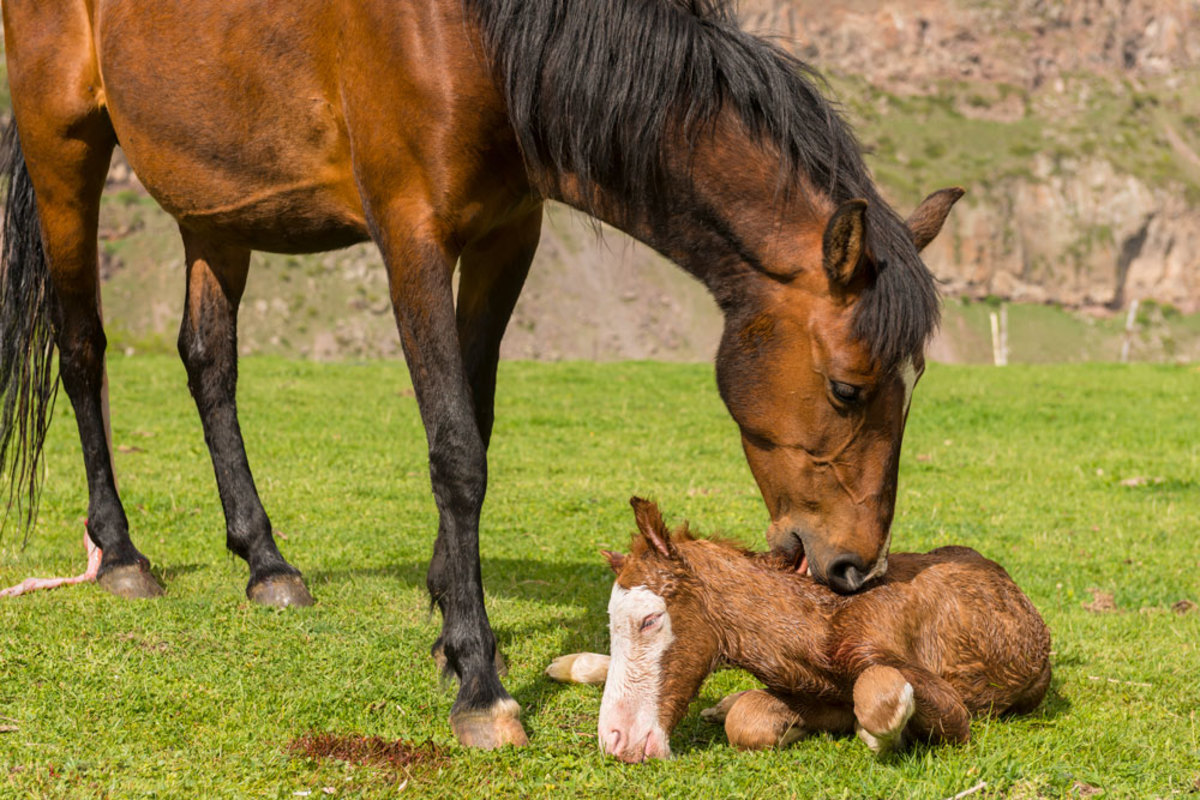
Even though blood transfusions are a source of anxiety for a great number of veterinarians, this procedure can be lifesaving in certain situations. According to Ashley Whitehead, DVM, BSc, DVSc, DACVIM-LA, blood transfusions are actually easier to perform that you might imagine.
“Horses have an average of 40 liters or 10 gallons of blood. Horses don’t tend to require a blood transfusion until they lose about 30% of their volume or 12 liters,” said Whitehead, associate dean at the University of Calgary’s Faculty of Veterinary Medicine in Canada. “Veterinarians often want to measure a hematocrit to assess blood loss, but there is a delay in hematocrit change after acute blood loss. Most importantly, we need to assess and treat the horse itself, not the bloodwork,”
For example, does the horse show any signs of shock? Dyspnea, tachycardia, ataxia, and elevated lactate are all indicators of cardiovascular shock and hypovolemia.
“Horses that need a whole transfusion are cardiovascularly unstable,” Whitehead added.
For specific examples of when a transfusion might be indicated, Whitehead listed the conditions that result in reduced oxygen delivery to tissues such as hemorrhage secondary to lacerations, guttural pouch mycosis, uterine artery rupture, or due to red cell destruction as seen in hemolytic anemias and neonatal isoerythrolysis. Preparations for a transfusion should also be considered prior to surgery that will involve a great deal of blood loss, such as sinus surgery.
What do you need for a blood transfusion? A donor, of course.
- Preferably a stallion, gelding or maiden mare with no history of ever having received a blood product, serum, plasma or antitoxin. These horses are the least likely to have pre-formed anti-RBC antibodies that could result a transfusion reaction or decreased donor red cell survival.
- Quarter Horses, Standardbreds and Morgans are typically safer donors than other breeds as they are less likely to have Qa and Aa antigens.
- Donors should be up-to-date on vaccines and, if possible, should undergo screening for infectious diseases, including the newly identified equine parvovirus (EqPV-H).
- In addition, the PCV of the donor should be greater than 35%.
Horses have more than 400,000 blood types, thus there is no true “universal” donor blood type. Horses that are negative for Aa, Ca and Qa antigens have the most compatible blood type to most domestic horses. While blood typing and cross matching are an important part of ensuring safe transfusion, commercial laboratory cross matching can take up to 24 hours, and blood type results can take up to 3 weeks.
“A commercial stall-side cross-matching is coming to equine medicine and will make emergency blood transfusions safer,” said Whitehead. “Fortunately, most horses do not have pre-existing antibodies against red blood cell antigens and a first-time emergency transfusion can be relatively safe.”
Ensure you have all the appropriate equipment before starting. A complete list is available in Whitehead’s AAEP Convention abstract. Key pieces of equipment include sterile blood collection bags (maximum of 3-4 liters) and acid-citrate-dextrose anticoagulant, both of which are available from most veterinary distributors. Emergency drugs in case a reaction occurs should also be readily available, including epinephrine, dexamethasone or prednisolone, and hydroxyzine.
Here were some specific tips that Whitehead provided during her presentation at the 2020 AAEP Virtual Convention:
- Collect and administer the blood as aseptically as possible;
- Start rehydration crystalloid fluids for the recipient while awaiting blood from the donor;
- Estimate the volume of blood required and consider the total volume you can collect from an average horse donor (8-10 liters);
- Don’t let the transfusion blood get cold during administration (i.e., insulate the blood products with warm towel in a cold barn);
- Replace your blood transfusion set with filter every 4 liters;
- Administer the transfusion at a slow rate (0.1 mL/kg) for the first 10-15 minutes, then increase it to the desired rate;
- Know the signs of non-hemolytic and hemolytic reactions.
“Monitor, monitor, monitor the recipient during the transfusion, and record your findings in the medical record,” Whitehead emphasized. Keys to watch for:
- If a mild reaction develops (like hives/urticaria), stop the transfusion, completely reassess the horse, and if the reaction remains mild without signs of hemolysis, restart the transfusion at the slow rate and continue to monitor; and
- Donor red blood cells can remain in the recipient’s circulation for more than 30 days; however, in cross match incompatible transfusions, the red cells might only survive five days. It is therefore important to continue to monitor for signs that a second transfusion is required and cross match future donors sooner rather than later.
“In summary, blood transfusions can be scary, but if you are prepared they are relatively straight forward and don’t need to be a daunting procedure to do in the field,” concluded Whitehead.








